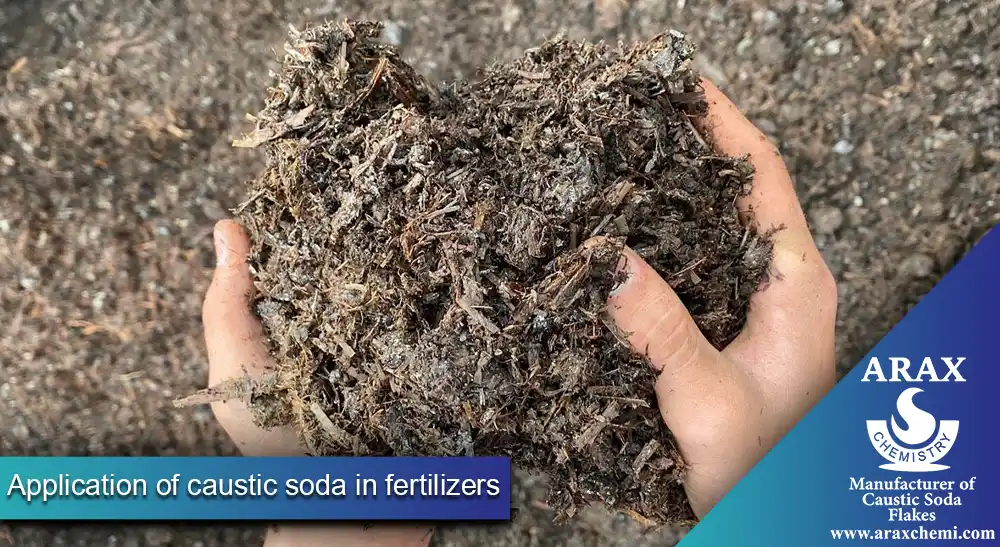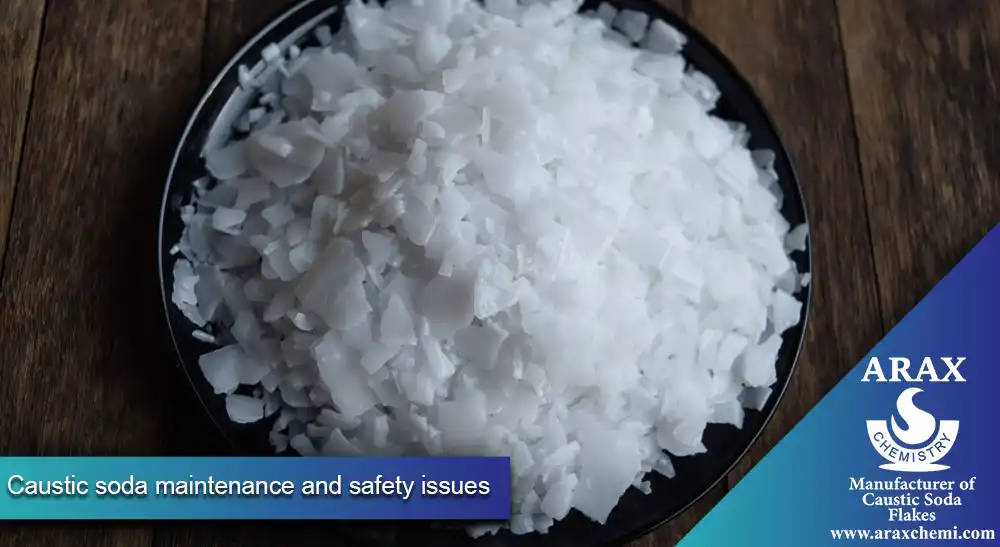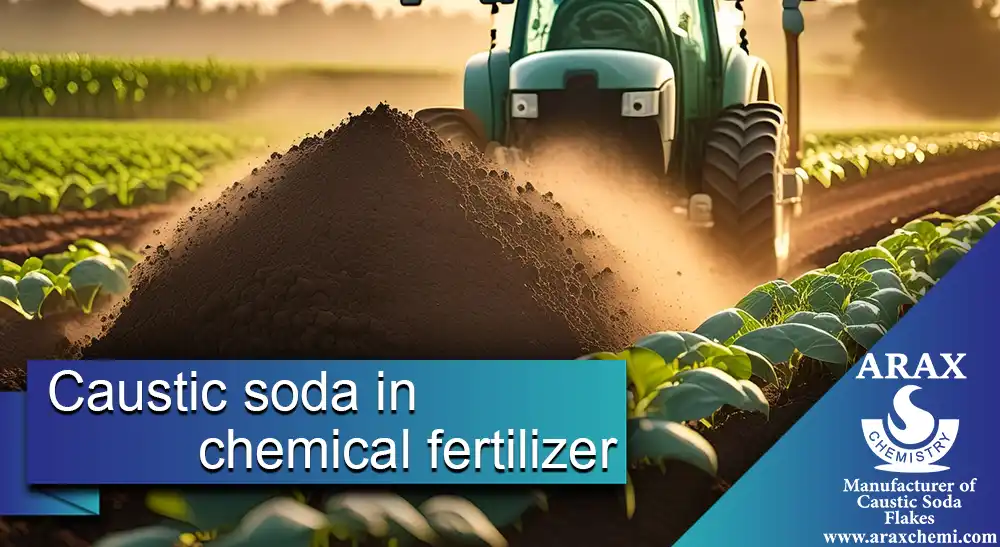Caustic soda, also known as sodium hydroxide (NaOH), is one of the most important chemicals used in various industries. Due to its strong alkaline properties, it is utilized in the production of soap, detergents, paper, textiles, and many other industries. In this article, we will examine the use of Caustic soda in fertilizer and discuss its effects on soil and plants.
Properties of Caustic Soda
Sodium hydroxide is a white, crystalline chemical that dissolves in water to form a highly alkaline solution. Some important properties of caustic soda include:
High Solubility in Water: Caustic soda easily dissolves in water, producing a highly alkaline solution with a pH greater than 13.
High Corrosiveness: This substance is highly corrosive and can damage skin and living tissues.
Reactivity: Sodium hydroxide reacts with many chemicals, making it useful in various chemical processes.
Applications of Caustic Soda in Fertilizer
The use of caustic soda in fertilizer production occurs for several reasons:

pH Adjustment of Soil: One of the primary applications of caustic soda in fertilizer is to adjust the pH of the soil. Acidic soils can be harmful to plant growth, and adding alkaline substances like sodium hydroxide can balance the soil pH.
Increasing Nutrient Absorption Caustic soda can help increase the nutrient absorption capability of plant roots due to the enhanced solubility of nutrients in the soil.
Soil Disease Control: The alkaline properties of caustic soda can help control certain soil diseases. Many pathogens and harmful microbes thrive in acidic soils, and raising the soil pH can inhibit their growth.
Effects of Caustic Soda on Soil and Plants
The use of caustic soda in fertilizer can have various effects on soil and plants, which must be carefully considered:
Impact on Soil pH: As mentioned, caustic soda can raise the soil pH. This is beneficial for highly acidic soils, but excessive use can make the soil too alkaline, leading to issues such as nutrient lock-up.
Impact on Soil Structure: Sodium hydroxide can alter the soil structure. In some cases, improper use of this substance can lead to soil structure breakdown and reduced soil aeration.
Impact on Plants: Uncontrolled use of caustic soda can harm plants. Excessive amounts can cause root and leaf burn, ultimately disrupting plant growth.
Environmental Impact of Caustic Soda
Caustic soda not only affects soil and plants but also has significant environmental impacts. Therefore, examining the environmental effects of this substance is crucial.
Groundwater Contamination: Excessive use of caustic soda can lead to leaching into groundwater, negatively affecting water quality.
Surface Water Pollution: Agricultural runoff can carry caustic soda to rivers and lakes, altering water pH and harming aquatic life.
Impact on Soil Microorganisms: Sodium hydroxide can have detrimental effects on soil microorganisms. These microorganisms play a vital role in organic matter decomposition and nutrient cycling in the soil, and harm to them can reduce soil fertility.

Proper Use of Caustic Soda in Fertilizers
For optimal use of caustic soda in fertilizer, the following points should be considered:
Soil Testing: Before using caustic soda, the soil pH should be accurately measured. This helps determine the appropriate amount of caustic soda needed to adjust the pH.
Appropriate Amount: Using the right amount of caustic soda is crucial. Excessive amounts can harm soil and plants. It is recommended to consult agricultural experts.
Proper Mixing: Caustic soda should be well mixed with other fertilizer materials to ensure even distribution in the soil. This can mitigate negative impacts from improper use.
Safety and Storage of Caustic Soda
Due to the high corrosiveness of sodium hydroxide, safety measures must be carefully followed when using it:
Use of Protective Equipment: It is essential to use gloves, protective goggles, and protective clothing to prevent direct contact with the skin and eyes.
Proper Storage: Caustic soda should be stored in corrosion-resistant containers in dry and cool places, away from children and animals.
Emergency Measures: In case of contact with skin or eyes, the affected area should be immediately washed with water, and medical attention should be sought if necessary.

Exploring Alternatives to Caustic Soda
Given the risks associated with using caustic soda in agriculture, exploring safer and more effective alternatives can be beneficial. Some possible alternatives include:
Quicklime (Calcium Oxide): Quicklime is also an alkaline substance that can help adjust soil pH. Using quicklime may be safer than caustic soda.
Calcium Carbonate: This substance can also help adjust soil pH and does not have the corrosive properties of caustic soda.
Organic Materials: Using organic fertilizers can improve soil structure and increase soil fertility. These fertilizers usually adjust soil pH gradually and pose fewer environmental risks.
Long-Term Effects of Using Caustic Soda
Long-term use of caustic soda in agriculture can have various impacts on the environment and soil. Some of these effects include:
Sodium Accumulation in Soil: Repeated use of caustic soda can lead to sodium buildup in the soil, resulting in soil salinity and reduced water infiltration.
Changes in Soil Nutrient Composition: Sodium hydroxide can alter the composition of soil nutrients, making some essential elements less available to plants.
Reduction in Soil Biodiversity: Long-term use of strong alkaline substances can reduce the biodiversity of soil microorganisms, negatively affecting soil fertility.
Strategies for Improving and Managing Caustic Soda Use
To improve and manage the use of caustic soda in agriculture, the following strategies can be employed:
Farmer Education: Educating farmers about the proper use of caustic soda and its environmental and soil impacts can help reduce risks.
Development of Alternative Methods: Research and development of alternative methods for adjusting soil pH and increasing fertility can reduce reliance on caustic soda.
Sustainable Soil Management: Implementing sustainable soil management practices, such as crop rotation and using organic fertilizers, can help maintain soil health and reduce the need for strong chemicals.
Conclusion
Caustic soda in fertilizer, as a strong alkaline substance, can play a significant role in adjusting soil pH and improving nutrient absorption by plants. However, improper use of this substance can harm soil and plants. Therefore, the use of caustic soda must be carefully managed and supervised by experts to maximize its benefits while avoiding potential damage. Adhering to safety measures and proper storage practices is also crucial to prevent potential hazards. Exploring safer and more effective alternatives can help reduce the risks associated with using caustic soda in agriculture. Ultimately, sustainable soil management and farmer education can contribute to better productivity and environmental protection.
